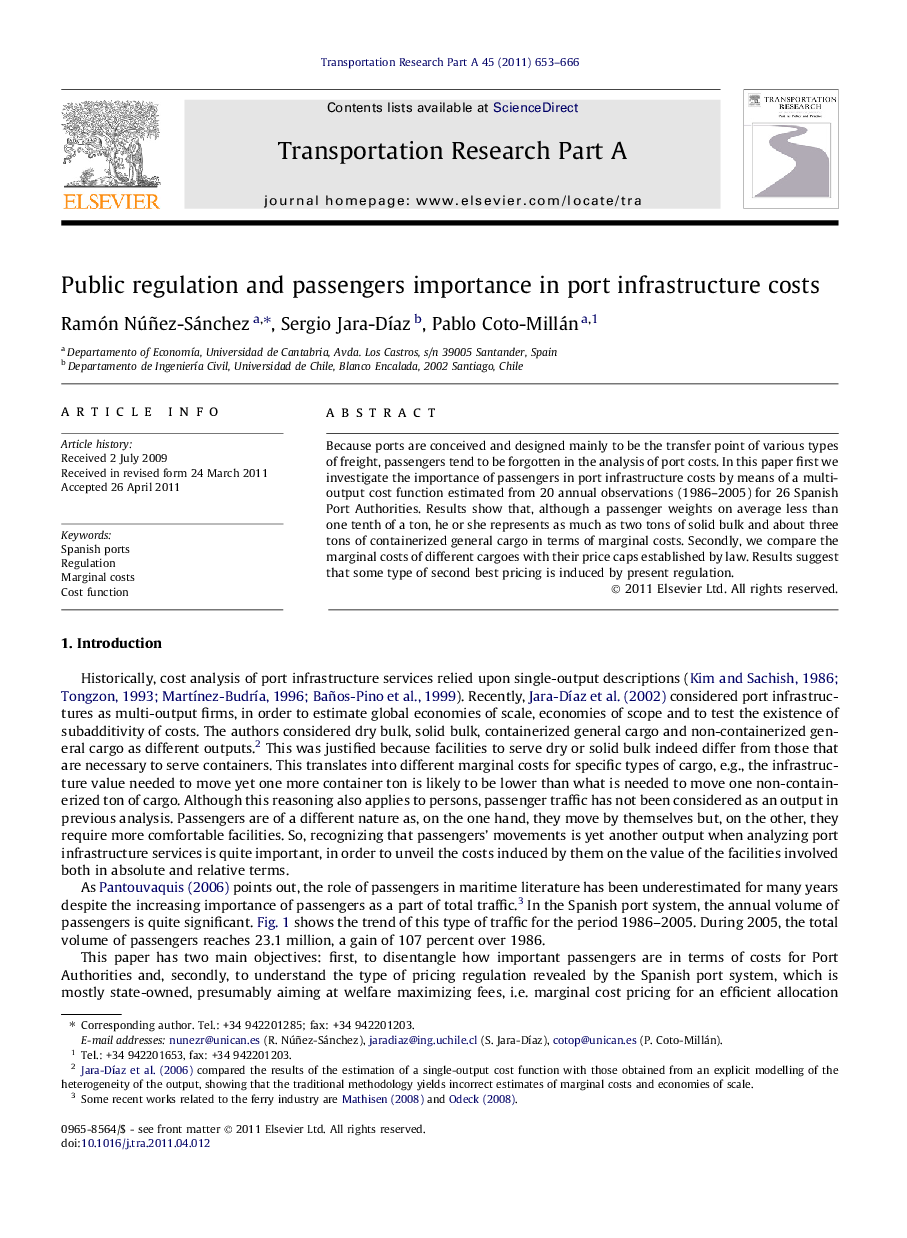| Article ID | Journal | Published Year | Pages | File Type |
|---|---|---|---|---|
| 310847 | Transportation Research Part A: Policy and Practice | 2011 | 14 Pages |
Because ports are conceived and designed mainly to be the transfer point of various types of freight, passengers tend to be forgotten in the analysis of port costs. In this paper first we investigate the importance of passengers in port infrastructure costs by means of a multi-output cost function estimated from 20 annual observations (1986–2005) for 26 Spanish Port Authorities. Results show that, although a passenger weights on average less than one tenth of a ton, he or she represents as much as two tons of solid bulk and about three tons of containerized general cargo in terms of marginal costs. Secondly, we compare the marginal costs of different cargoes with their price caps established by law. Results suggest that some type of second best pricing is induced by present regulation.
► Passengers are equivalent to between two and three tons of cargo in terms of marginal cost of port infrastructure. ► All of Port Authorities, except two, present increasing returns to scale. ► Price caps slightly larger than or equal to marginal costs suggest second best pricing induced by present regulation.
